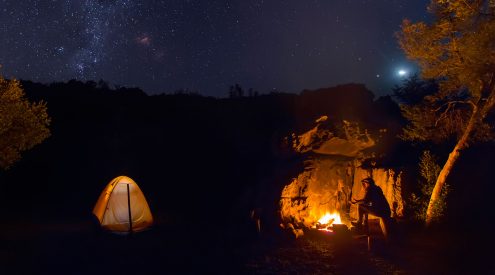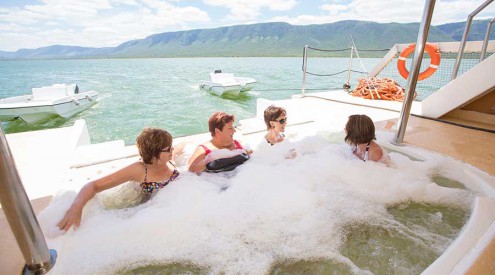“˜Look at those fluffy horns!’ I giggled. “˜She looks like a punk-rocker.’
The safari-guides proclaim it’s one of the ways to tell a female giraffe from a male. The horns of the male are bald, while the horns of the female are adorned with tufts of hair.
“˜That’s not a she,’ my buddy declared with certainty from the driver’s seat.
I wriggled around, repositioning myself in order to get a glimpse of its belly. There was indeed a tell-tale “˜lump’ there. Although perhaps not as prominent as that of a male elephant, his penis was practically waving at me.
“˜Never believe those safari guides”¦’ I muttered.
Every day you see and discover something new; something not the norm. It is the magic of the African bush.
It’s become my mission to uncover new spots where the Presidential Elephants of Zimbabwe roam, since it’s clearly not in the elephants’ best interests for me to succumb to recent demands from one large hotel that I must service only their new-found interest in them. (More about that later.) Like all wild elephants, the Presidential families roam over considerable distances. You can sit and watch these remarkable elephants for hours at Ivory Lodge’s well-maintained waterhole. You’ll find them regularly on the vlei close to Sikumi Lodge. And they’re often roaming the forestry areas surrounding Ganda Lodge. With the Main Camp section of the unfenced Hwange National Park so close by, some Presidential families will also be frequenting waterholes like Livingi, Tshebe Tshebe and Nyamandlovu. While on drives inside the park, I’ve been paying close attention, keen to identify and document where you can encounter them, and which families to look out for when driving around Hwange. Today, however, I’m merely on a fun day out to Ngweshla – a favourite spot inside the park. (Also visit www.sharonpincott.com and have a read of my article titled “˜Trumpets and roars’ from the May 2010 edition of Getaway magazine, for a little more about Ngweshla.)
We were close to Makwa pan, one of the most attractive waterholes inside the National Park. A little further on from the hairy-horned giraffe, a beautiful ballet was underway. (See third photo.) Jousting for supremacy, the male giraffes swing their head and neck, fluid and lithe, in poised and incredibly graceful movements. For the giraffe on the receiving end of these heavy clouts it can’t be too pleasant, but it is indeed a delight to watch. If I hadn’t ended up working with elephants, the elegant giraffes would have my full attention.
Further on at Ngweshla another myth was righted. “˜There are no big-tuskers left in Hwange,’ so many people say. It is true, I think, that there are not many big-tuskers left for the photographic tourists to enjoy – certainly I only very rarely, if at all, see them nowadays on the land surrounding Hwange National Park (which is itself surrounded by sport-hunting concessions) – but there are indeed at least a few left roaming inside the National Park. And I was thrilled to encounter these two beautiful boys (see forth and fifth photos) enjoying each other’s close company.
My American companion had, the day before, described her many cherished hours sitting amongst the very habituated Presidential Elephants as “˜other worldly’. Watching the elephants – and the inquisitive giraffes – inside the National Park was a completely different, but still special experience. Precious moments and memories, to last a lifetime.

















